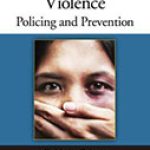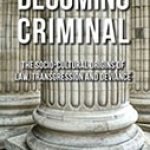Flawed Convictions: “Shaken Baby Syndrome” and the Inertia of Injustice

Author: Deborah Tuerkheimer
Publisher: Oxford, UK; New York: Oxford University Press, 2014. 320p.
Reviewer: David A. Moran | September 2014
In the early 1970s, English neurosurgeon A. Norman Guthkelch and American radiologist John Caffey each published articles positing that violent, abusive shaking of infants could produce subdural hematoma (bleeding beneath the dura layer in the brain). Since a subdural hematoma can produce brain damage or even death, Guthkelch and Caffey hoped their articles would raise awareness of the dangers associated with shaking infants.
They succeeded beyond their wildest expectations. Over the following decades, the original Guthkelch and Caffey suggestion, that shaking an infant might cause a particular brain injury, mutated into a very different and very powerful “Shaken Baby Syndrome” (SBS) hypothesis: if a baby has a subdural hematoma and two other symptoms, retinal hemorrhage and cerebral edema (swelling of the brain), then the baby has been violently shaken even if there are no other signs of abuse present. And, because the shaking would immediately produce brain damage, the guilty party must be the last person who was with the baby before the symptoms began.
The medical establishment accepted the new SBS hypothesis largely uncritically. Medical schools taught generations of medical students that if a baby came to the hospital with the “triad” of symptoms, someone had violently shaken the baby. Hospitals and medical schools created a new kind of doctor, the “child abuse pediatrician,” who specialized in “diagnosing” SBS.
These doctors routinely testified to a “reasonable degree of medical certainty” in criminal trials that babies had been abusively shaken, that no other cause could explain the triad, and that the last person known to have been with the baby before the onset of symptoms must have done it. Thousands of parents and other caregivers faced charges of child abuse and murder based largely or entirely on this testimony. The vast majority were convicted because there were few, if any, experts willing or able to challenge the hypothesis.
The uncritical acceptance of the SBS hypothesis began to unravel in the late 1990s following the high-profile trial of Louise Woodward, an English nanny charged with shaking a baby to death in Massachusetts. Patrick Barnes, now a pediatric neuroradiologist at Stanford Medical School, testified to the SBS hypothesis for the prosecution in the Woodward case but, after the trial, began to question what he had been taught. Barnes soon became a leading skeptic of SBS, and more and more experts have joined his ranks ever since.
Barnes and the other leading SBS skeptics have persuasively argued that the hypothesis is, at best, unproven and, at worst, completely wrong. It would be, of course, unthinkable to conduct a study in which babies are shaken and then examined to see if they have subdural hematomas, retinal hemorrhages, and cerebral edema, but it is telling that there is not a single documented case in which abusive shaking has been observed and the triad subsequently discovered. On the contrary, studies using biofidelic dummies suggest that shaking strong enough to produce the trial would also produce damage to the vertebra and, likely, bruising to the trunk, but these signs have apparently never been observed in an SBS case.
Meanwhile, published case reports have documented that accidental and natural forces, such as short falls, strokes, and certain diseases, can and do produce the triad. And there is now indisputable evidence that infants with the triad may remain conscious and asymptomatic for hours before becoming unresponsive, so that the last person with the baby is not necessarily responsible, even if the cause of the triad is abuse.
As a result of these challenges to the SBS hypothesis, dozens of convicted parents and caregivers have been exonerated in the past decade, while many more have been acquitted or not charged in the first place. In 2009, the American Academy of Pediatrics (AAP) abandoned the term “Shaken Baby Syndrome” in favor of the vaguer diagnosis, “Abusive Head Trauma.” In 2012, even Guthkelch, the father of the SBS hypothesis, denounced the way it had been used to send people to prison when alternative, and more likely, explanations for the triad were present.
In her new book, Flawed Convictions: “Shaken Baby Syndrome” and the Inertia of Injustice, Deborah Tuerkheimer, a law professor at DePaul University, concisely traces the rise and slow decline of SBS. But her real focus, as the subtitle suggests, is not on the science but on a legal question: Why is the legal system so slow to recognize the injustice that has been done to those convicted based on the SBS?
Tuerkheimer tells in detail the stories of several parents and caregivers who were released from prison after courts were willing to recognize that the new scientific challenges to SBS undermined their convictions (full disclosure: one of Tuerkheimer’s featured cases involves Julie Baumer, who served four years for child abuse and was a client of mine until her exoneration in 2010). These accounts are heartbreaking tales of lives shattered by terrible accusations, followed by years of imprisonment and estrangement from loved ones. As Tuerkheimer shows, the “lucky” SBS exoneree must struggle to put the pieces of his or her life back together while continuing to live under a cloud of suspicion.
But for every person convicted on discredited or shaky SBS testimony who has since been exonerated, there are many, many more still in prison. As Tuerkheimer shows, the law often values finality over truth and therefore places time limits and other barriers in the way of prisoners seeking to use the latest science to overturn their convictions. Even if the law permits a post-conviction petition, most inmates lack the resources necessary to mount an effective challenge. When a judge does hear a petition challenging an SBS conviction, the prosecution will likely call experts who will defend the original testimony.
Even more disturbing than the “legal inertia” that keeps most SBS defendants convicted on discredited testimony in prison, is the fact that some medical experts continue to testify to this day that nothing other than shaking could account for the triad, even though that position is now scientifically indefensible. A few even continue to testify that the baby would collapse immediately after the shaking, thus identifying the last caregiver with the baby as the culprit, even though there is no longer any scientific dispute that a baby may remain lucid for hours after a head injury.
Tuerkheimer explains that courts uphold past SBS convictions and permit new ones to occur in part because judges in criminal cases typically refuse to perform the gatekeeping role the Supreme Court assigned them more than two decades ago in Daubert v. Merrell Dow Pharmaceuticals. In civil cases, judges routinely scrutinize expert testimony to make sure it is based on sound scientific principles that the expert has reliably applied to the particular case. But in criminal cases, so-called “Daubert hearings” are extremely rare, and judges almost never keep out prosecution experts, no matter how dubious their proposed testimony. Of the more than 300 DNA exonerations in the United States since 1989, more than half of them featured incorrect or invalid scientific testimony at trial, but virtually nothing has been done to improve the reliability of forensic and scientific evidence in criminal cases.
Tuerkheimer lays out in compelling detail how the deck is stacked against the typical SBS defendant. The prosecution has one or more experts who will testify, with practiced certainty, that someone violently abused the infant. The typical SBS defendant is poor or middle class and therefore lacks the resources to hire a skilled attorney, much less retain the experts needed to rebut the SBS testimony. If the defense does have an expert, the prosecutor will likely refer to him or her as a hired gun while praising the prosecution’s own expert as a defender of children.
The defendant in an SBS case usually speaks to the police (a parent or caregiver who did nothing wrong is often eager to assist the investigation), and the prosecutor will characterize what the defendant says as a flagrant lie. Even worse, if the defendant admits to the police that he or she may have jostled the baby to try to arouse him after realizing something was wrong, the prosecution will characterize that statement as a “confession” to the shaking. Faced with those odds, it is no wonder that, as Tuerkheimer documents, many SBS defendants plead guilty while simultaneously maintaining their innocence.
Tuerkheimer’s book is a highly readable resource for anyone interested in the history of the SBS controversy and the current state of affairs, but the most valuable part of the book is her list of proposed reforms to prevent and remedy wrongful SBS convictions. In order to protect defendants before trial, she calls for greater transparency in the criminal justice system, including broader discovery (so that the defense would know, for example, if any of the physicians who examined the case dissented from the SBS conclusion), and the right to take depositions from prosecution experts. Tuerkheimer also urges judges to treat prosecution experts with the same degree of skepticism they apply to plaintiffs’ experts in civil cases.
As for those who have been already convicted, Tuerkheimer advocates that judges be more willing to recognize that the doctrine of finality should yield when scientific advance has called a conviction into doubt. She also maintains that courts should hold a conviction based on scientifically unreliable evidence to be unconstitutional even if the science was considered valid at the time of trial. Finally, she argues that the government itself, through prosecution integrity units and independent innocence commissions, has the responsibility of identifying and investigating scientifically doubtful convictions.
The SBS exonerations during the past decade have brought much needed attention to the problems Tuerkheimer has identified in this short and readable book. Advocates for those SBS defendants remaining behind bars would be wise to read this valuable work, as would anyone who cares about the accuracy of the science presented in our criminal courts.
David A. Moran, Clinical Professor of Law and Director of the Michigan Innocence Clinic, University of Michigan Law School


